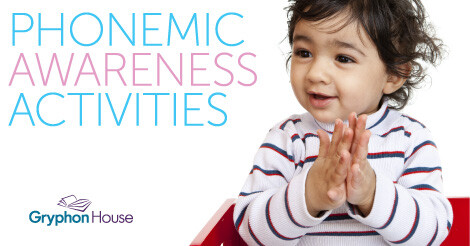Phonemic awareness is a key part of building a foundation for successful literacy development within young children. Researchers have found that children as young as four weeks old have the ability to recognize differences between certain letter sounds, already starting to develop their phonological awareness at this early stage.
Many parents and educators may wonder how to build the phonemic awareness of their little learners if the development of this skill does not rely entirely on reading letters or recognizing print. However, activities focused on listening, such as rhyming games, are a wonderful way to introduce the concept of phonological awareness to young children.
Literacy for All Young Learners, by Mary Renck Jalongo, PhD, is full of helpful parent and teacher strategies that will set your child on the right track for becoming a successful reader.
Here are a few rhyming games and teacher strategies that will help your little one develop their sense of phonological awareness.
Relying on Actions and Oral Language
- Watch the video of author Mem Fox reading Hello Baby! On YouTube.com (Type “Mem Fox reads from Hello Baby” in the search bar.)
- Make a list of the rhyming word pair from each page, then make several pairs of words that do not rhyme.
- Have the children use listening only and clap when the words sound alike or rhyme. When the word pair does not sound alike, the children do not clap.
- Nursery rhymes are another way to build phonological awareness, teach children cultural traditions, support speaking and listening skills, and encourage creative expression. Include the nursery rhymes of lots of cultures, and, if possible, share them in the original language to preserve alliteration, rhythm, rhyme, and repetition. Volunteers and tutors who speak a child’s first language can share nursery rhymes in an authentic way and point out the words that rhyme.
Relying on Visual Images
1. Long before children can read and say rhyming words, they can hear words that match. Introduce the concept of a dust bunny- a nice way of saying there is so much dust, fuzz, and hair on the floor that it starts to collect and move around. Read Rhyming Dust Bunnies by Jan Thomas. In this story, three dust bunnies, Ed, Ned, and Ted, rhyme, but not Bob. He is a rugged individualist and does not like sounds that “match.” When a broom and sweeper threaten to break up the happy group, Bob comes to the rescue.
2. The book contains rhyming words, and for each group, there is also a word that does not rhyme. Have the children listen to the words in random order and stand up when they hear the word that does not match the others.
car, far, jar, tar, look
bug, rug, hug, mug, out
dog, hog, log, fog, monster
cat, sat, pat, rat, help
3. To make the game more active, make a box labeled same/rhyming and a box labeled different/not rhyming. The same/rhyming box should show four identical white dust bunnies, while the different/not rhyming box should show a blue bunny. Use five nylon net body scrubber poufs, available at the dollar store- four of the same color and one that is different. When a child takes a turn, she will listen to a series of five words - some that rhyme and one that does not. If a word sounds like the others, she can toss a white scrubber into the same/rhyming box. If a word sounds different, she can toss the different colored scrubber into the different/not rhyming box. Then, go back through and review the five words.
bear, chair, hair, pear, cow
duck, truck, cluck, yuck, mouse
dog, frog, log, hog, cat
bed, head, said, fed, cow
run, sun, fun, bun, play
bee, knee, tree, see, cloud
big, pig, wig, dig, leaf
sad, mad, bad, dad, desk
hen, pen, den, men, chair
4. Practice all of the rhymes that children can hear together. Children will see that the one word that does not “match” is also a different color. When this concept is in place, you can line up the “dust bunnies” and practice with other five-word/picture sets. For each set you invent, one word should be dramatically different in sound.
Author(s)Mary Renck Jalongo
Anna Wilmoth
Marketer. Publisher. Reporter. Educator. Mother. Runner. Explorer. Anna served as director of marketing for Gryphon House from Oct 2014 - May 2017.

